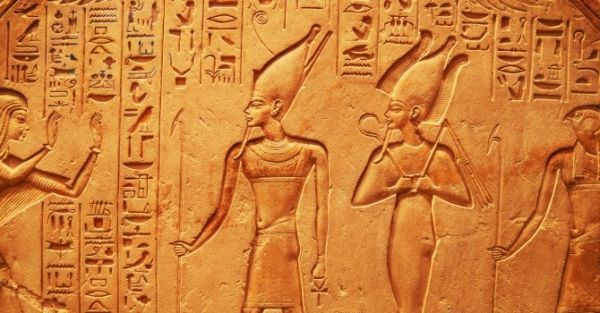Unlocking the Mysteries of Ancient Hieroglyphs
The ancient art of Egyptian hieroglyphs has long captured the imagination of people around the world. These intricate symbols, with their artistic and symbolic representations, offer us a window into the rich history and culture of ancient Egypt. In this comprehensive exploration, we delve into the meaning, history, usage, and significance of hieroglyphics.
What Hieroglyphics Meant and Their Significance?
Egyptian hieroglyphs were more than just an elaborate form of writing; they were a means of communication that blended art, language, and culture. Each hieroglyph represented an idea, concept, object, or even sound. The beauty of hieroglyphics lies in their capacity to convey both concrete and abstract ideas, transcending the limitations of simple alphabetic scripts.
Hieroglyphics as a Form of Writing
Yes, hieroglyphics were indeed a form of writing. Contrary to what some might believe, hieroglyphics were not just artistic drawings, but a sophisticated writing system with a rich grammar and structure. It was used to document a wide range of information, from historical events to religious beliefs, providing an invaluable resource for deciphering the ancient Egyptian world.
The Age of Hieroglyphics
Hieroglyphics date back to the earliest periods of ancient Egypt, making them one of the oldest writing systems in the world. The origins of hieroglyphics can be traced to around 3300 BCE, during the Early Dynastic Period. Over time, this system evolved, incorporating various symbols and becoming more standardized.

Hieroglyphics: Language or Not?
Hieroglyphics themselves are not a language, but a writing system used to convey the ancient Egyptian language. The language spoken and written using hieroglyphs was a complex and nuanced one, with a grammatical structure that included verbs, nouns, adjectives, and more. The hieroglyphic symbols served as the visual representation of this language, allowing scribes to record and communicate their thoughts effectively.
Types of Egyptian Hieroglyphs
Egyptian hieroglyphs can be categorized into several types based on their functions and forms. One of the most well-known categories is the phonetic glyphs, which represented individual sounds in the ancient Egyptian language. These symbols played a crucial role in writing names and foreign words. Another category is the determinative glyphs, which helped provide context to the words they accompanied. For instance, a symbol of a bird might appear after a word related to birds, clarifying the word's meaning.
Hieroglyphics in Egyptian Culture
Hieroglyphics were not just a writing system; they were deeply ingrained in the fabric of ancient Egyptian culture. They adorned the walls of temples, tombs, and monuments, recounting stories of pharaohs' achievements, religious beliefs, and daily life. Hieroglyphic inscriptions were also considered powerful and sacred, often believed to have a connection to the spiritual realm.
The Role of Egyptian Hieroglyphs in Modern Times
While the use of hieroglyphics as a practical script declined over time, their significance has not waned. In modern times, hieroglyphics continue to captivate scholars, historians, and enthusiasts alike. Deciphering hieroglyphs has allowed us to reconstruct the history and beliefs of ancient Egypt, shedding light on a civilization that thrived millennia ago.
Egyptian hieroglyphs are an extraordinary testament to the creativity, ingenuity, and culture of ancient Egypt. These intricate symbols go beyond mere writing; they are an art form, a means of communication, and a window into a civilization that has left an indelible mark on human history. As we continue to study and decode hieroglyphics, we gain deeper insights into the mysteries of the past, connecting us with a world that once thrived along the banks of the Nile.
Best Egypt Private Tours 2026
| Tour | Itinerary | Price |
|---|---|---|
| Luxor and Aswan Travels | 4 Days | $ 665 |
| Cairo Holiday Packages | 5 Days | $ 815 |
| Cairo to Petra Tour | 7 Days | $ 945 |
| Egypt and Dubai Tours | 8 Days | $ 999 |
| Turkey and Egypt Tours | 8 Days | $ 1060 |
| Wheelchair Accessible Nile Cruise | 4-5 Days | $ 1145 |
| Cairo and Luxor Holidays | 5 Days | $ 1225 |
| Egyptologist Tours | 7 Days | $ 1335 |
| Egypt Overland Tours | 8 Days | $ 1355 |
| Cairo and Nile Cruise Package | 7 Days | $ 1375 |

